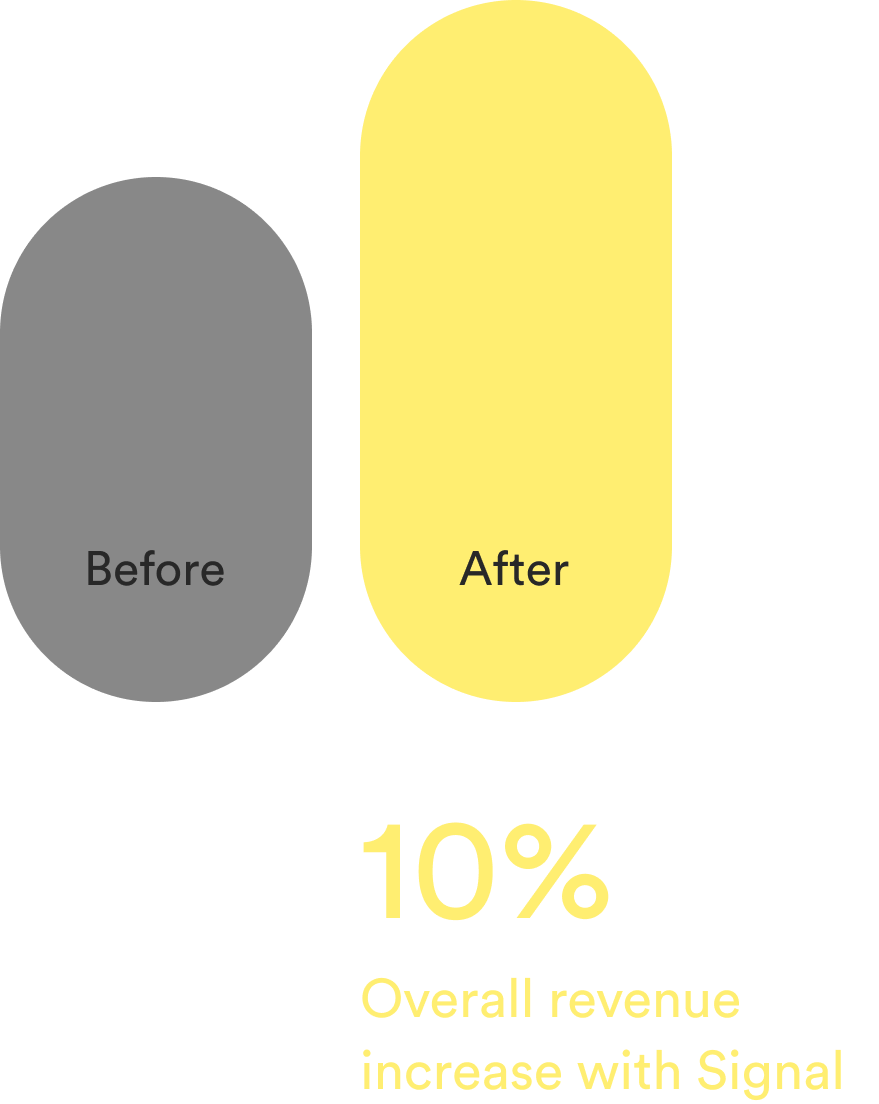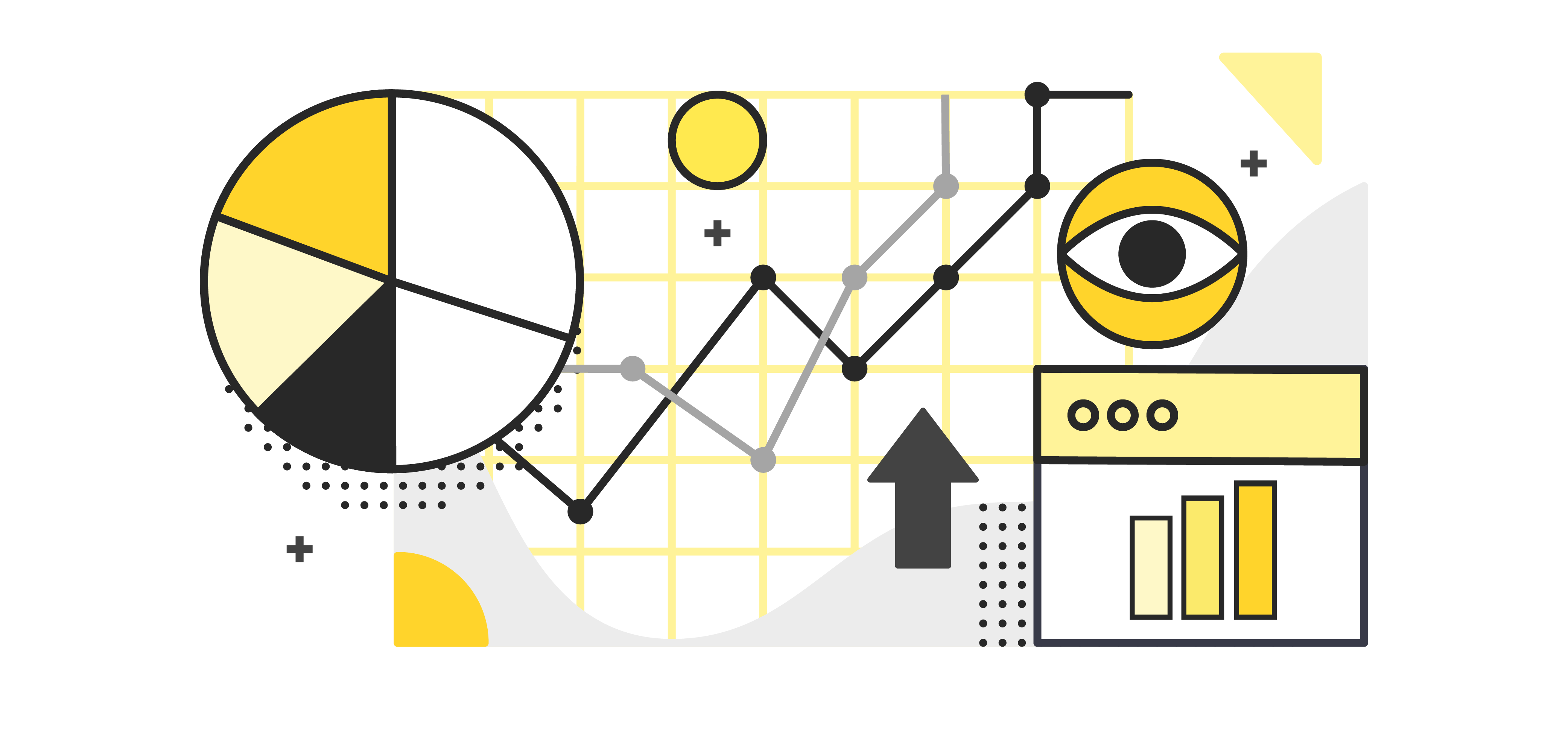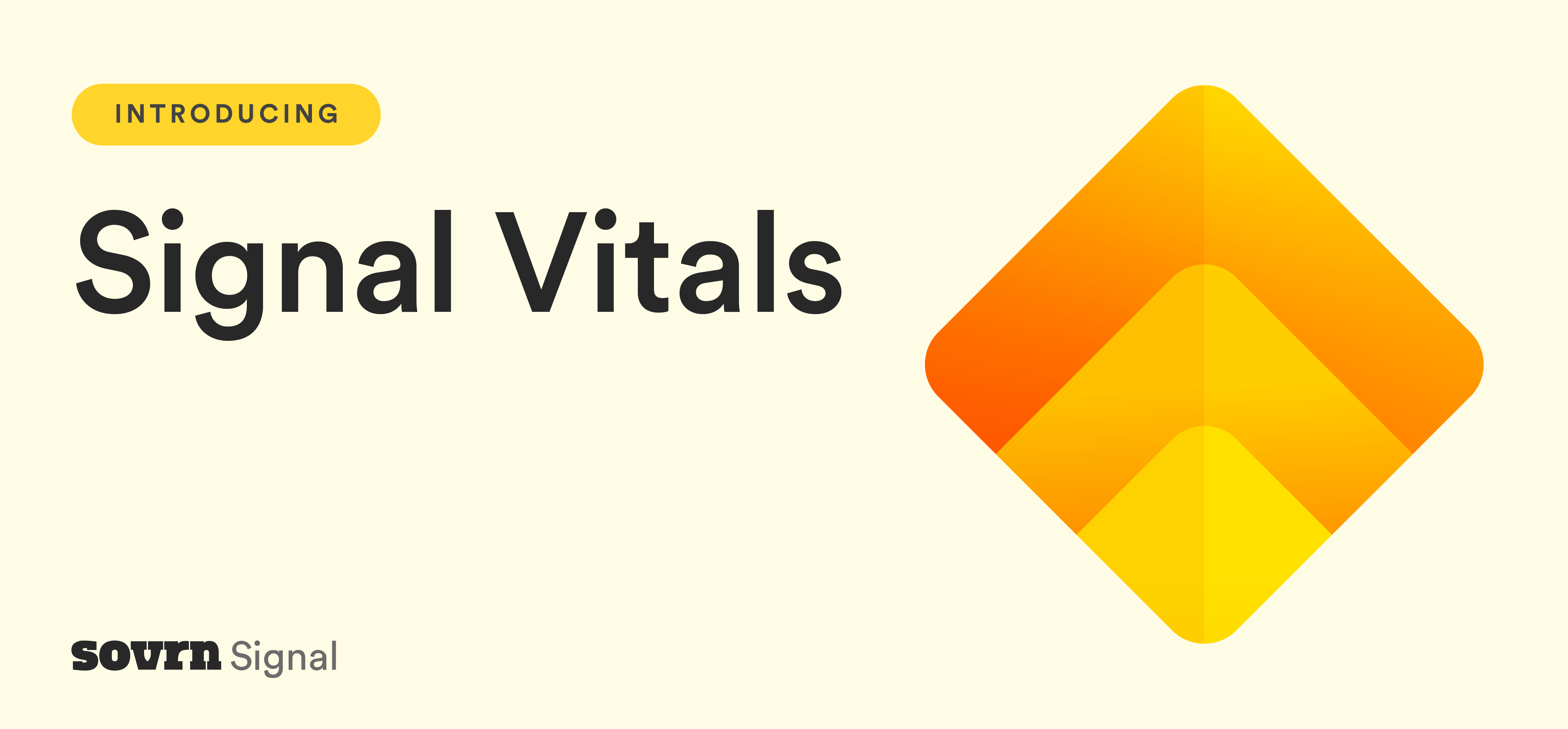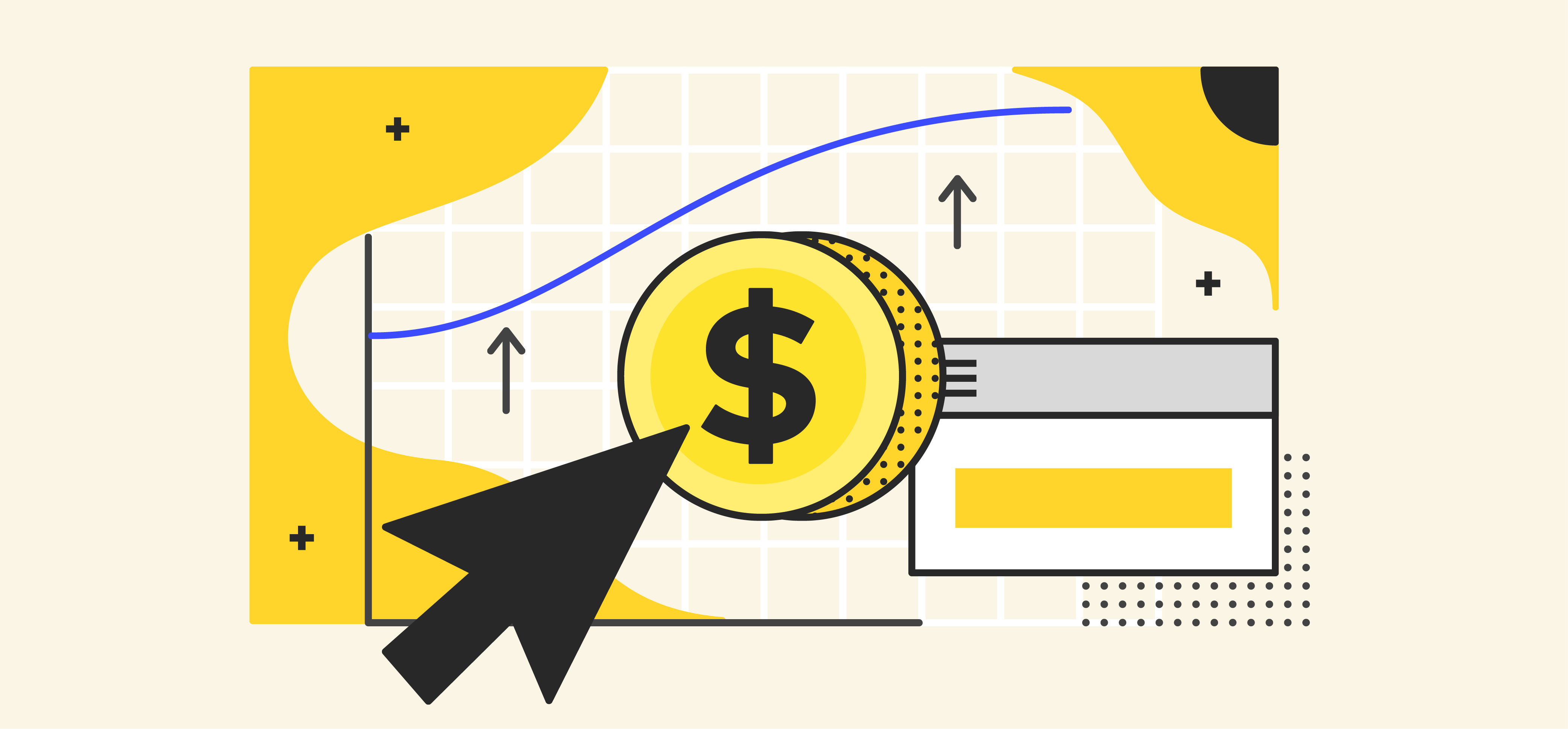
SIGNAL
Turn Attention
Into Higher Yield.
BID ENRICHMENT
DYNAMIC PRICING

AD RELOAD

ENGAGMENT MEASUREMENT
ATTENTION SEGMENTS

DATA ACTIVATION
POST-COOKIE SOLUTIONS
DATA ACTIVATION

DATA DECISIONING ENGINE
MAXIMIZE YIELD

VIEWABILITY
Ready to capitalize on attention?

Harness the Value
of Attention
Signal empowers publishers to unlock the full potential of their ad inventory by leveraging attention and behavioral data from the Sovrn Data Collective. Our data and attention-first approach drives higher CPMs and better engagement for your most valuable impressions.
Win at SPO with Sovrn’s zero take-rate and capture more of every advertising dollar while promoting buyer efficiency for your most valuable inventory.
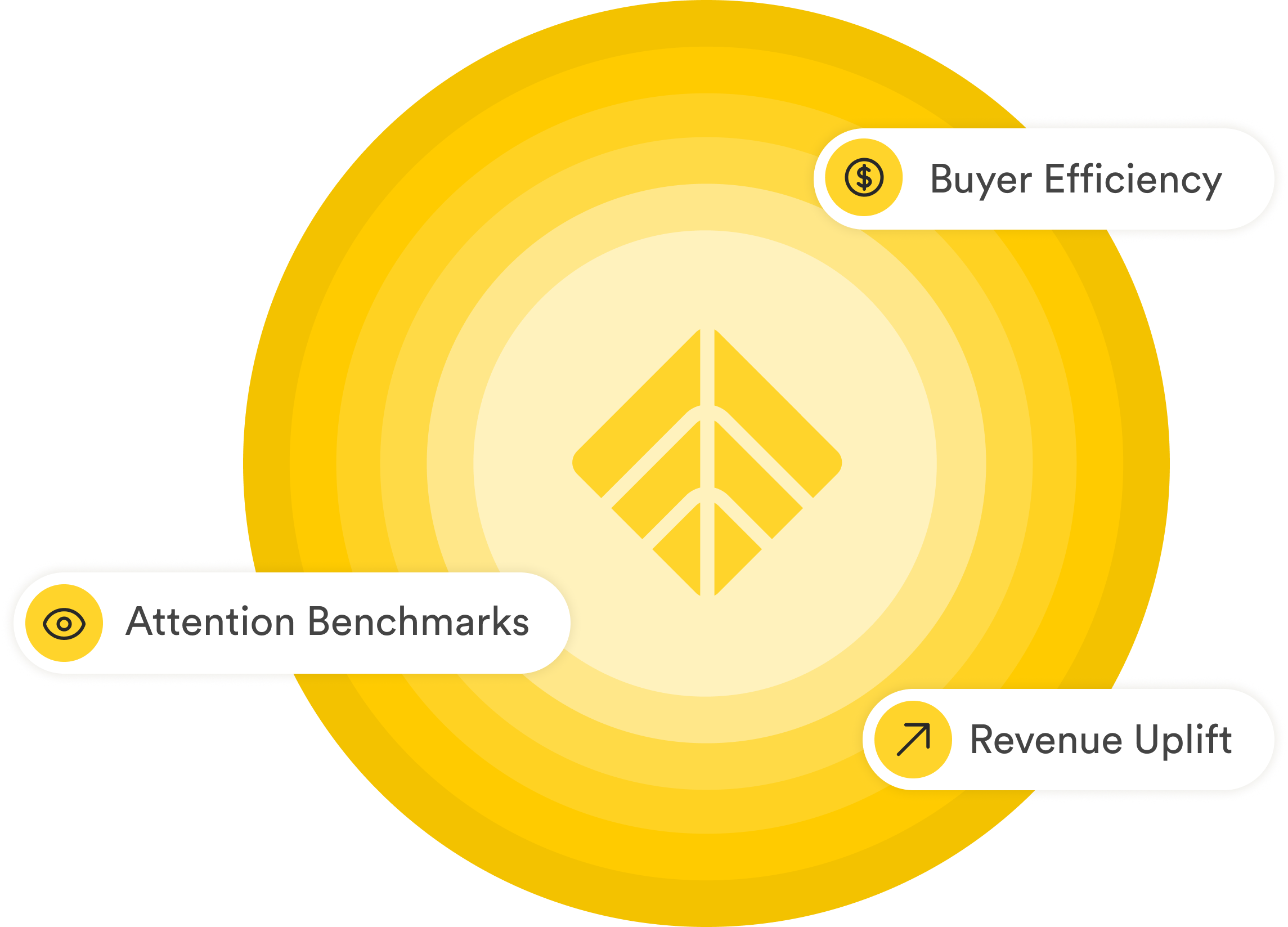

Ad Performance,
Made Clear
Signal Vitals
See real-time visibility into the health and performance of your ad inventory. Act on critical metrics like attention, viewability, bid rate, and ads-to-content ratio.
Easily understand how buyers perceive your supply — and how to improve it.
Move from data to revenue without the guesswork.
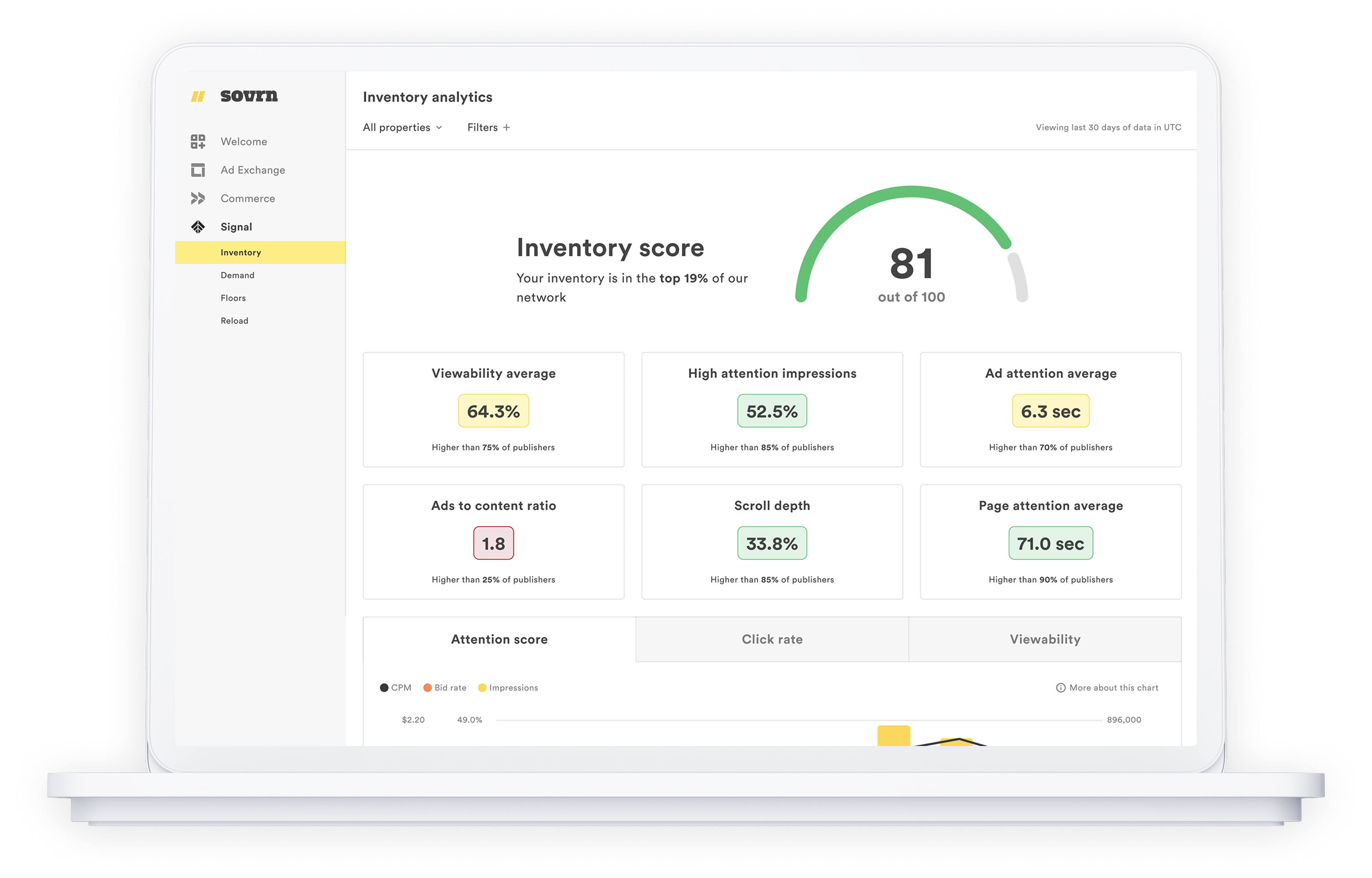
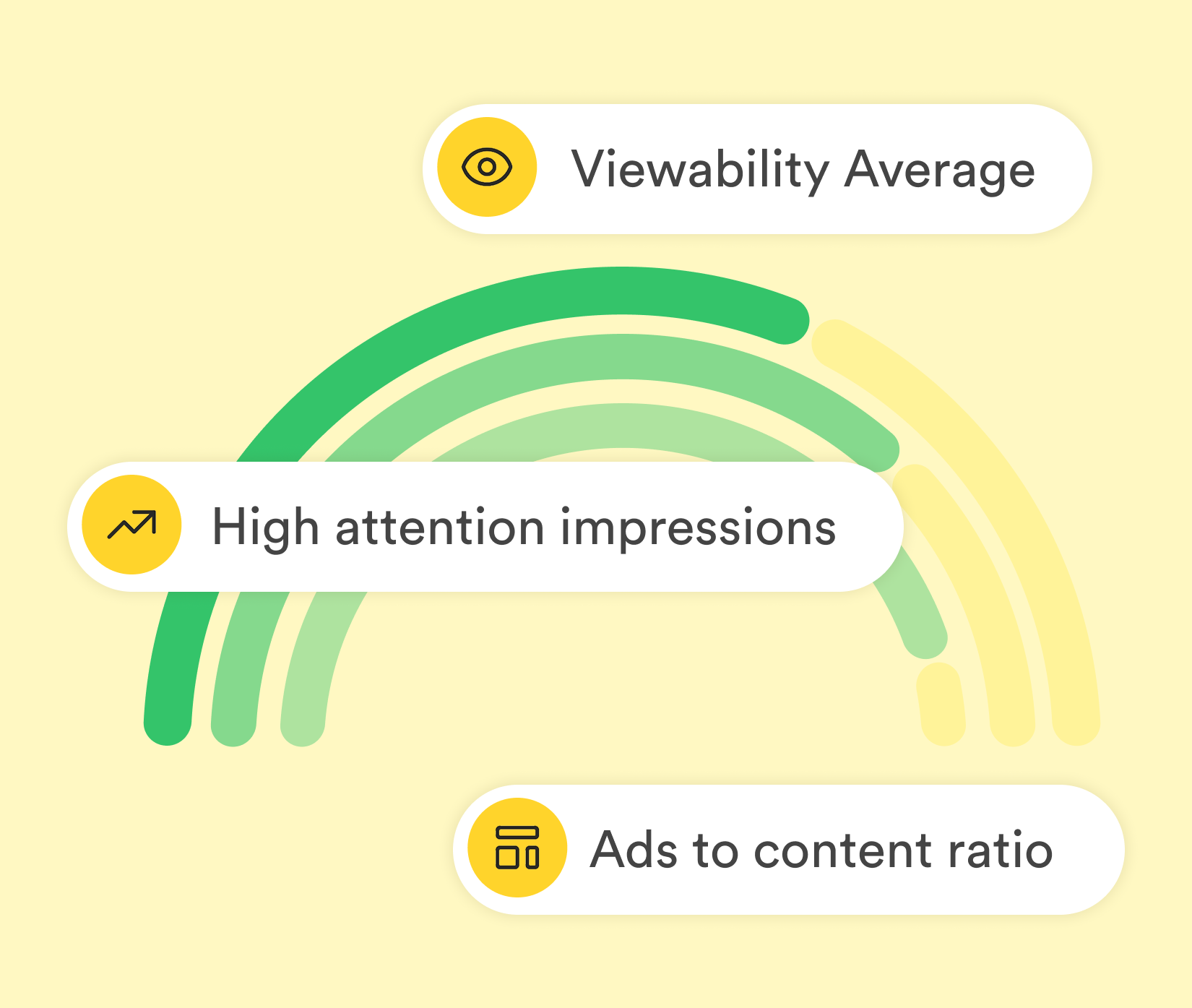
Inventory Score
With built-in benchmarks and actionable insights, publishers can optimize their ad experiences with the Inventory Score. The score breaks down what’s helping—or hurting—ad performance, so they can improve in real time.
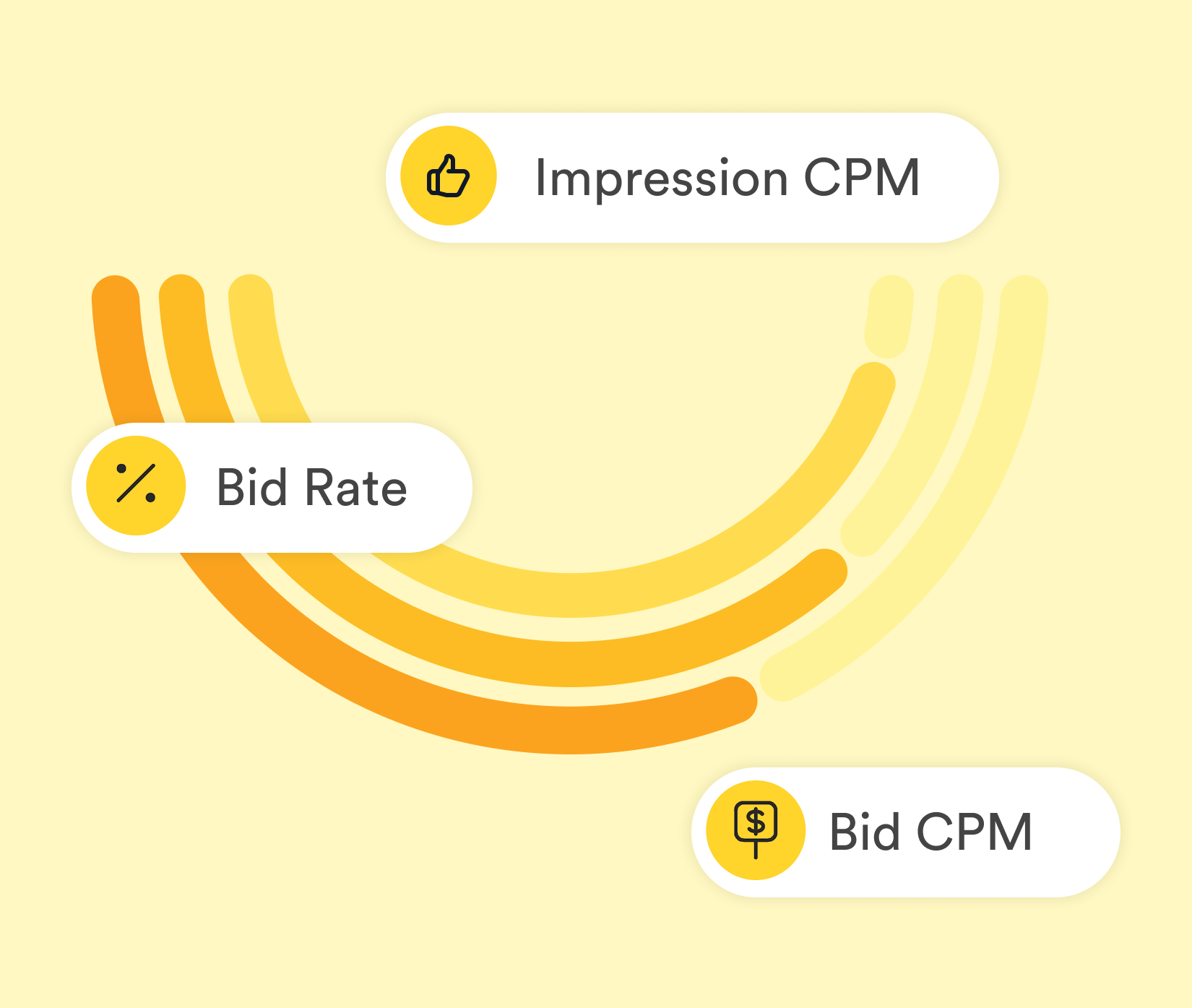
Demand Score
The Demand Score combines ad inventory and demand performance into one clear metric. The score shows how well pages are converting ad opportunities into revenue—so publishers can understand advertiser expectations better and unlock higher yield.

Set the Right Price, Every Time
Signal Dynamic Floors analyzes viewer attention and real-time auction data to determine an impression’s true worth instantly.
Dynamically broadcast price floors to all your SSP partners and watch the money roll in.
>2x
Yield uplift across supported Prebid bidders
+10%
Revenue uplift across Prebid
>2x
Yield uplift
across supported
Prebid bidders
Dynamically broadcast price
floors to all your SSP partners
and watch the money roll in.
+10%
Revenue uplift across Prebid
Measure
Signal measures the attributes of every advertising opportunity.
Optimize
Leveraging real-time data, Signal estimates the market price of an auction.
Broadcast
Dynamic price floors are set in your bid requests and shared with all SSPs.
Monetize
Signal’s algorithms adjust to changes in demand which amplify your yield and ensure a consistent boost in earnings.

Curate Attention,
Drive More Value
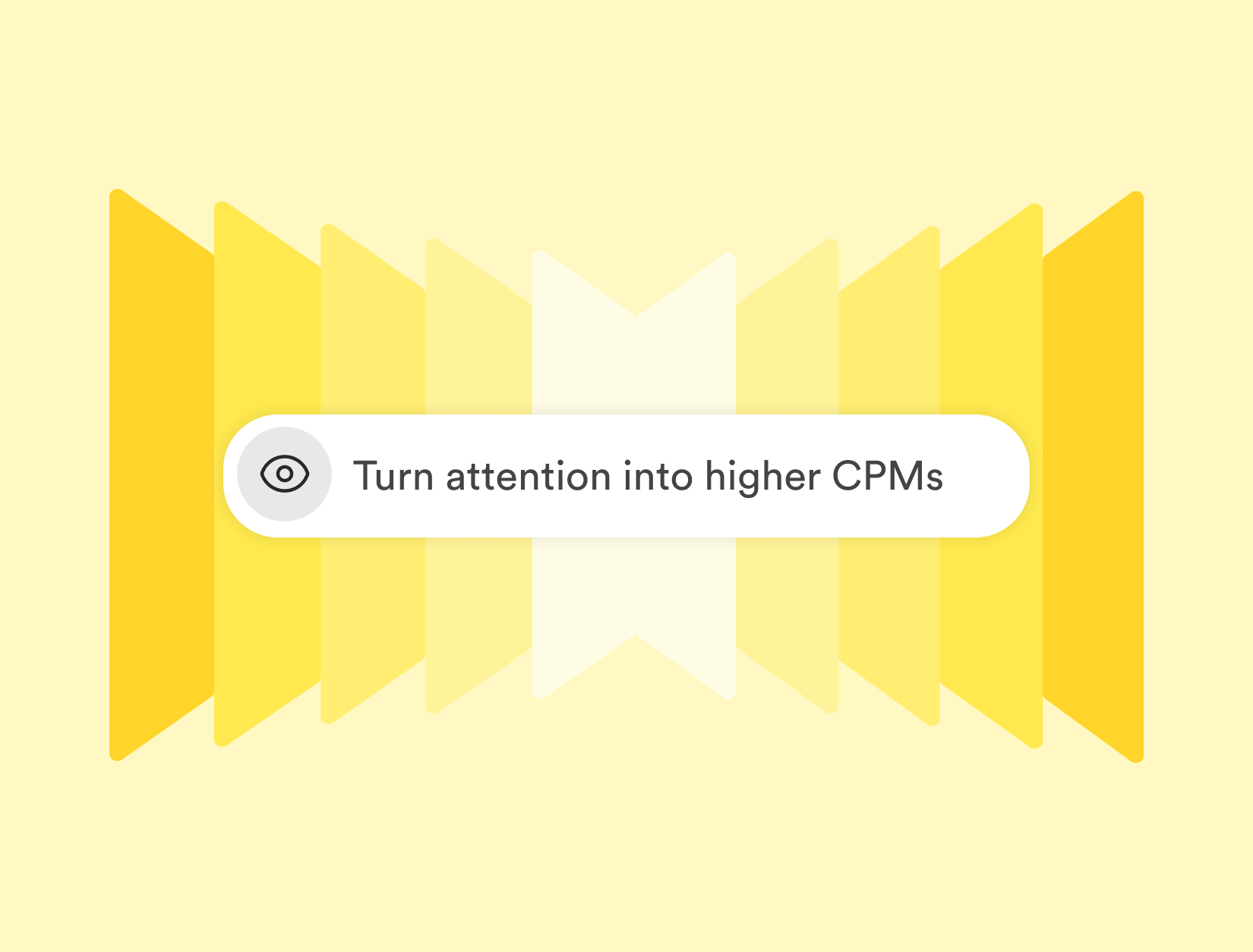
Optimize Inventory in Real Time
Signal curates ad units with high viewability and strong attention metrics automatically, enabling you to create premium inventory packages directly within your ad server.
Deliver greater value to advertisers by helping them seamlessly target engaged audiences for maximum results.
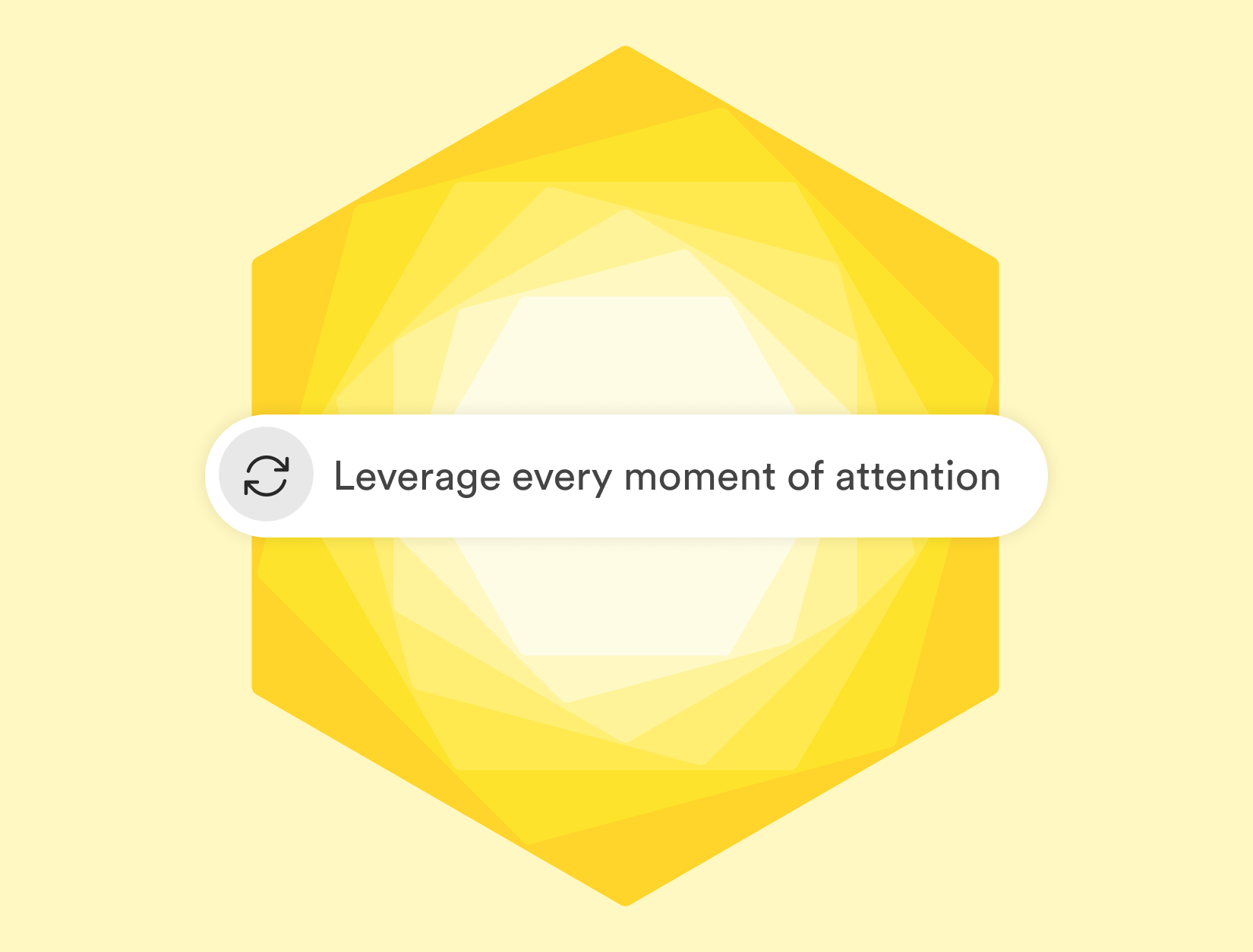
Attention-Based Ad Reload
When viewers stay captivated, Signal Ad Reload keeps the impressions coming. Maximize revenue by leveraging every moment of genuine attention.
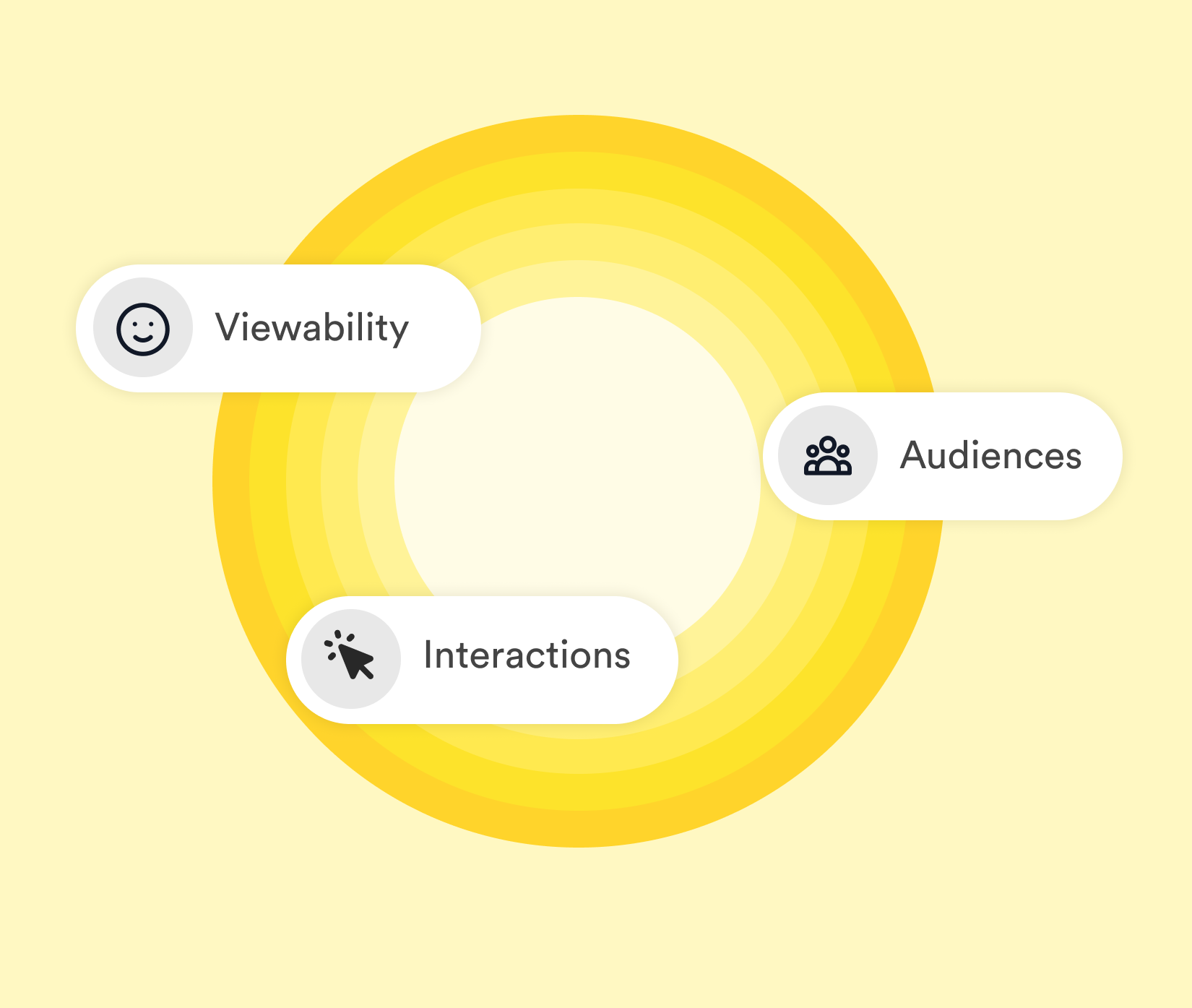
Join High-Attention PMPs
Signal automatically opts your inventory into high-attention PMPs, creating exclusive opportunities for premium buyers to access your most valuable impressions.
Increase competition, drive higher CPMs, and establish your inventory as a must-buy.



Real Results,
Proven Impact
See how Sovrn Signal boosted revenue for Mumsnet and Daily Voice, with uplift of 10-20%.
Daily Voice Results
10% Overall revenue increase
20% Average yield uplift when a floor is present
$0.39 Average CPM uplift per ad unit
Mumsnet Results
10% Overall revenue increase
21% Average yield uplift when a floor is present
$0.28 Average CPM uplift per ad unit
